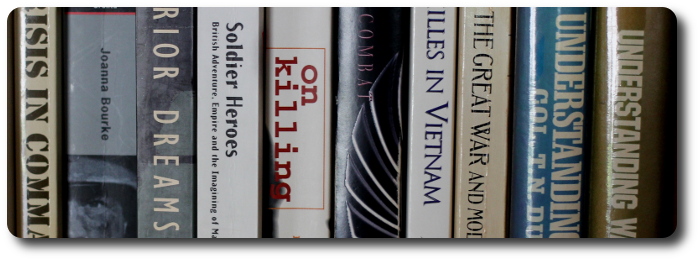
The Canadian Army Reading List - Version 1, September 2001
Introduction -
Doctrine -
Military Theory -
Canadian Military Heritage -
Military History -
Campaign and Battle Studies -
Leadership -
The Human Factor -
Technology -
Future Warfare -
Peacekeeping -
Politics, International Relations and Economics -
Ethics, Domestic Issues and Social Trends -
Fiction
Friedman, Thomas L. The Lexus and the Olive Tree. New York: Anchor Books, 2000. ISBN 0-385-49934-5.
An acclaimed book by the foreign affairs columnist for The New York Times dealing with the integration of capital, technology and information across national boarders, better known as globalization. The author recounts the rise of this new international system, how it replaced the Cold War System, and the problems that may result as globalization clashes with culture, geography, tradition and community.
Hellyer, Paul. Damn the Torpedoes: My Fight to Unify Canada’s Armed Forces. Toronto McClelland and Stewart, 1990.
A memoir by the politician who has most affected Canadian defence organization. Hellyer discusses the 1964 White Paper, the “Admiral’s Revolt”, the “Landymore Affair” and the unification of the armed forces.
Kennedy, Paul. The Rise and Fall of the Great Powers: Economic Change and Military Conflict from 1500 to 2000. New York: Random House, 1987.
Rarely does a book attract such attention among strategists, politicians, military personnel and the lay reader. This controversial study of public policy and national strategy sets modern problems against broad historical trends. Should be read in conjunction with the critical literature and reviews on the book.
Mahant, Edelgard and Mount, Graeme S. Invisible and Inaudible in Washington: American Policies Toward Canada. Vancouver and Toronto University of British Columbia Press, 1999. ISBN 0-7748-0703-2.
An examination of White House policy towards Canada from 1845 to the 1980s which argues that for the most part Canada has mattered little in Washington and that America’s Canada policy is largely an ad hoc affair.
Morton, Desmond. Ministers and Generals: Politics and the Canadian Militia, 1868 - 1904. Toronto University of Toronto Press, 1974. ISBN 0-0820-5228-2.
Prior to 1904, command of the Canadian Militia (which until 1940 referred to both regular and reserve forces) was vested in a British officer. All but one found it difficult, if not impossible, to complete his duties. The relationship between these officers and Canadian politicians along with the function of the Militia Department is recounted in this important study.
Stacey, C.P. Canada and the Age of Conflict: Volume 1: 1867 - 1921: A History of Canadian External Policies. Toront University of Toronto Press, 1984. ISBN 0-8020-6560-0.
Stacey, C.P. Canada and the Age of C conflict: Volume 2: 1921 – 1948: The Mackenzie King Era. A History of Canadian External Policies.Toront University of Toronto Press, 1981. ISBN 0-8020-6420-0.
Canada’s relations with the outside world are examined in these two magisterial volumes. Written by a former Director of History at Army Headquarters, Stacey chronicles how changing social, political and economic conditions guided Canada’s external relations for its early years to the immediate post-Second World War era. Volume 1 discusses how an isolated self-governing colony whose external relations were governed by the British Foreign Office was broken in upon and how Canada assumed the powers of a nation-state. The second volume continues with the period when Canada began to espouse a position on and in the world.
- The O'Leary Collection; Medals of The Royal Canadian Regiment.
- Researching Canadian Soldiers of the First World War
- Researching The Royal Canadian Regiment
- The RCR in the First World War
- Badges of The RCR
- The Senior Subaltern
- The Minute Book (blog)
- Rogue Papers
- Tactical Primers
- The Regimental Library
- Battle Honours
- Perpetuation of the CEF
- A Miscellany
- Quotes
- The Frontenac Times
- Site Map
QUICK LINKS
Commander Canadian Army's Reading List 2015
Infantry School Reading List
By Rank
By Subject
Canadian Army Reading List
Introduction
Doctrine
Military Theory
Canadian Military Heritage
Military History
Campaign and Battle Studies
Leadership
The Human Factor
Technology
Future Warfare
Peacekeeping
Politics, International Relations and Economics
Ethics, Domestic Issues and Social Trends
Fiction